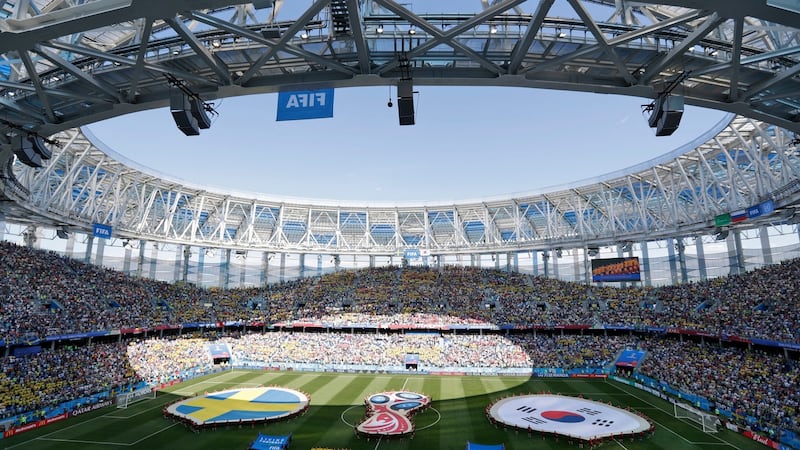There are no views of the Volga river from the high-rise windows around Gagarina Prospekt, and the only reason that visitors venture this far back into the city is to walk through the apartment of Andrei Sakharov. Nothing in the modest ground floor rooms have been changed: not the wallpaper, not the twine he used to fix the leg of the table where he wrote, nor the television set which constantly broke down, not the glass ashtray on the mantelpiece nor the telephone, installed by the KGB in 1989 so he could receive one specific call: from Mikhail Gorbachev, to tell him he could come back to Moscow.
Throughout the 1980s Sakharov was Gorky’s [now called Nizhny Novgorod] most famous resident, and few lives have embodied both the breadth of vision and minuscule absurdities of the Soviet era as much as his.
An intellectual phenomenon – home-schooled by a physicist father and gymnastics teacher mother – Sakharov was inducted into a select group of physicists tasked with developing the hydrogen bomb. He succeeded, designing the RDS-37, edging the Russians ahead of the West in nuclear supremacy.
Yet when he saw its first testing in the winter of 1955, Sakharov was horrified by the scope of its potential destruction, and to learn afterwards that a child from a distant town had been killed after the blast shattered windows.
Over the following decades he became, contrarily, a key Soviet physicist and an emerging dissident voice: a conscientious advocate for peace and human rights that led to both the Nobel Peace Prize in 1975 and his enforced exile to Gorky five years later, where he lived under insanely heavy scrutiny by the KGB.
Military production
The city was the perfect place to prevent him from giving interviews and opinion articles to the foreign press: the city was, and remains, a centre of military production, and was, therefore, entirely closed off from foreigners from the 1950s until the end of the 1980s.
You would never find the Sakharov home without help: a small sign behind a heavy metal door at the rear of an anonymous apartment block – he could not have been given more obscure lodgings in the city. Russian visitors and tourists from the cruise ships that stop at the city port visit the apartment, but staff have received few visitors from the football fans in the city. “They just want to drink beer,” laughs the tour guide.
That’s generally but not entirely true. Most fans touring through the Russian interior have been completely sideswiped by just how quickly their prejudices and assumptions have been stripped away.
On Tuesday morning it was 30 degrees, and the city was under siege from unholy thunderstorms and showers. Lots of people ducked under the big arches of the Kremlin fortress, the historic jewel of the city, for cover. Among them was Marcus from Hamburg. He wore his Deutschland shirt even though he was in the city because he scored tickets for Sweden and Korea (E-bay: nobody was checking the ticket number against the fan ID). He reckoned he may well have been the only German in Nizhny.
And he had been treated royally; spoiled by his AirBnB hosts; plied with vodka by a few locals he met on his first night. It was his first time in Russia, and he felt himself shocked not so much by the warmth of people as by his assumption that it would be otherwise.
Outside world
He reckoned this month will bring about an essential shift in how the outside world thinks of Russia: that for World Cup visitors the experience would remove the inherited sinisterness.
He flicked through his phone, laughing heartily at the headlines of a crisis in the German camp and complaining that he could find nothing in the German media that reflected what it feels like to be a foreign visitor in Russia. “Just the football all the time,” he shrugged.
On Tuesday night, long after midnight, a few teenage lads waved Russia flags on the main road in Zarechnaya so passing cars could beep their horns. Nizhny responded to Russia’s emphatic 3-1 thumping of Egypt. But you could tell that this was uncharted territory for the city as a whole.

How disorientating it must be for locals who lived through the those 30 years when their city was closed off from the outside world to now see people from all corners of the world waltzing down the same streets where Sakharov, on his periodic visits to the city centre, would walk to break the monotony of a greatly reduced life, trailed by KGB agents, cut off from family.
His reputation was international by then but his existence intensely local: if he and his wife booked tickets for the theatre they knew that that the seats on either side would be reserved by agents there to record their every move. It was the height of paranoia and secrecy.
Three decades
And the transition in three decades has been disconcertingly swift: the city reverting to its pre-Soviet name of Niznhy, and Sakharovs apartment transformed into a museum as early as 1991. The man himself had died of a heart attack in December 1989.
He would struggle to recognise the fancier parts of Nizhny now, but would undoubtedly have a few things to say about the city’s newest development: the $290 million Novogrod stadium; a splendour on the river’s edge that has that hauntingly new feel of a stadium that is going remain empty for long, long periods once the big football games have passed and the foreign accents and faces and all the football colours of the world disappear from Nizhny once again.












